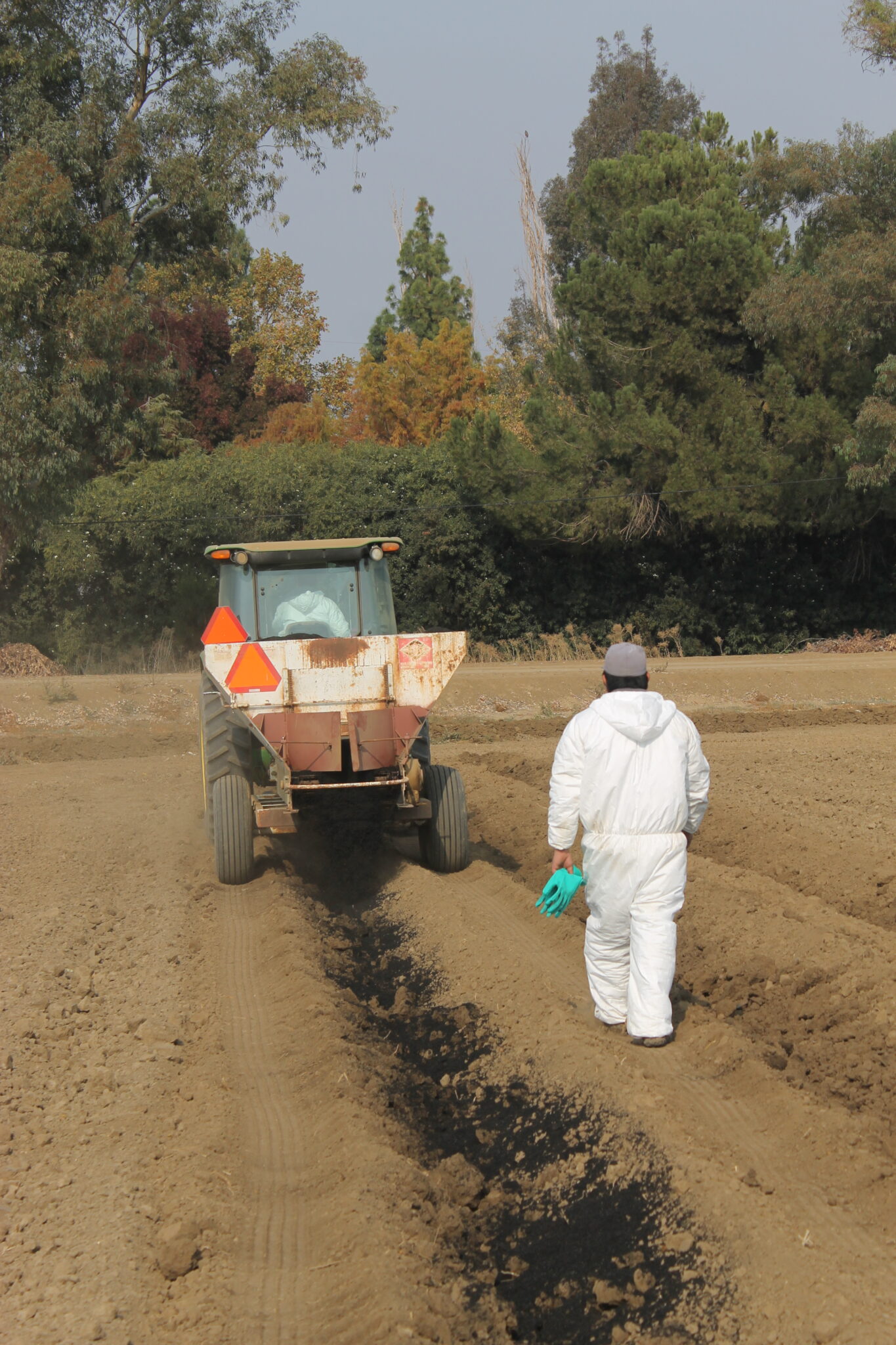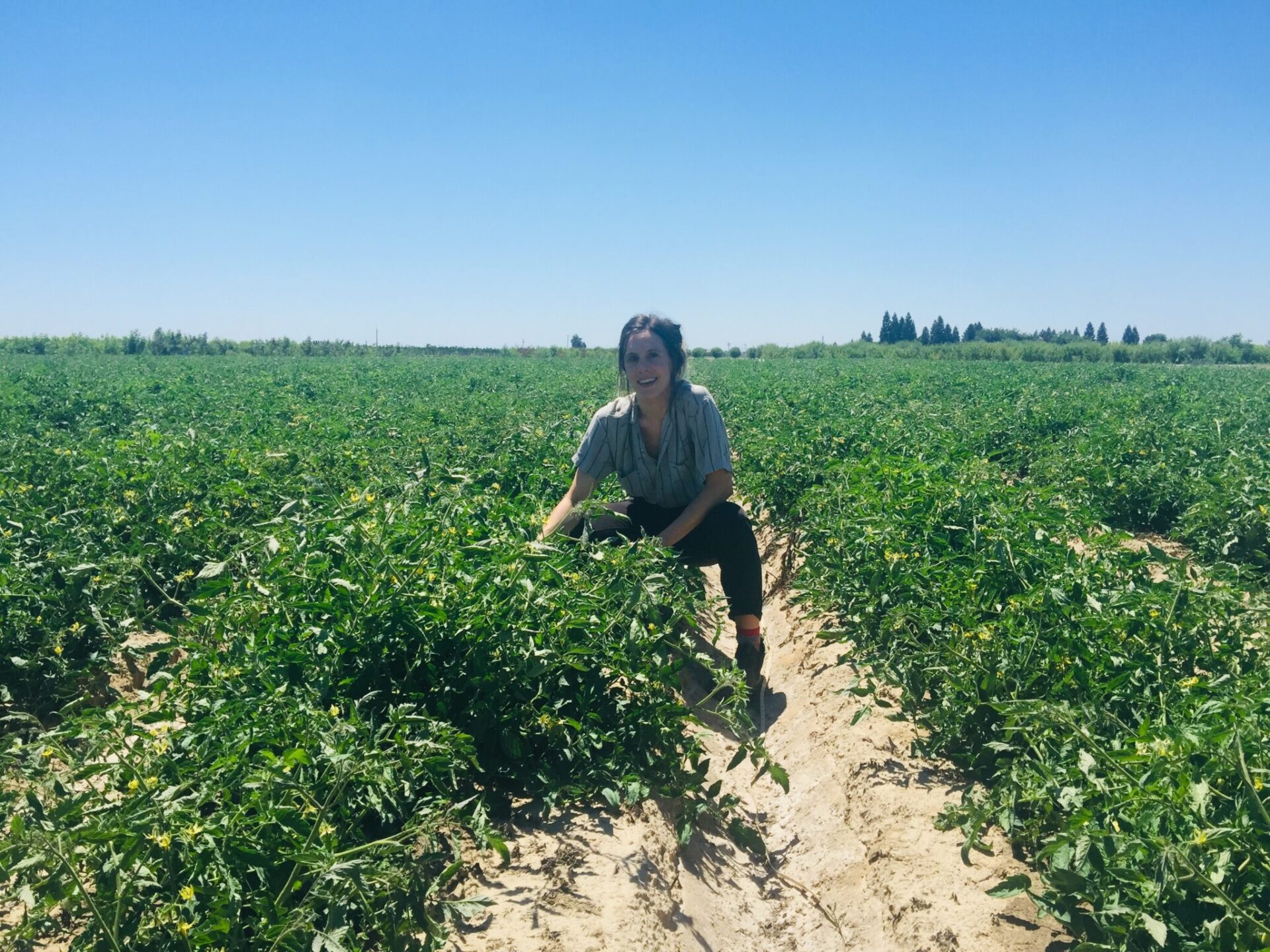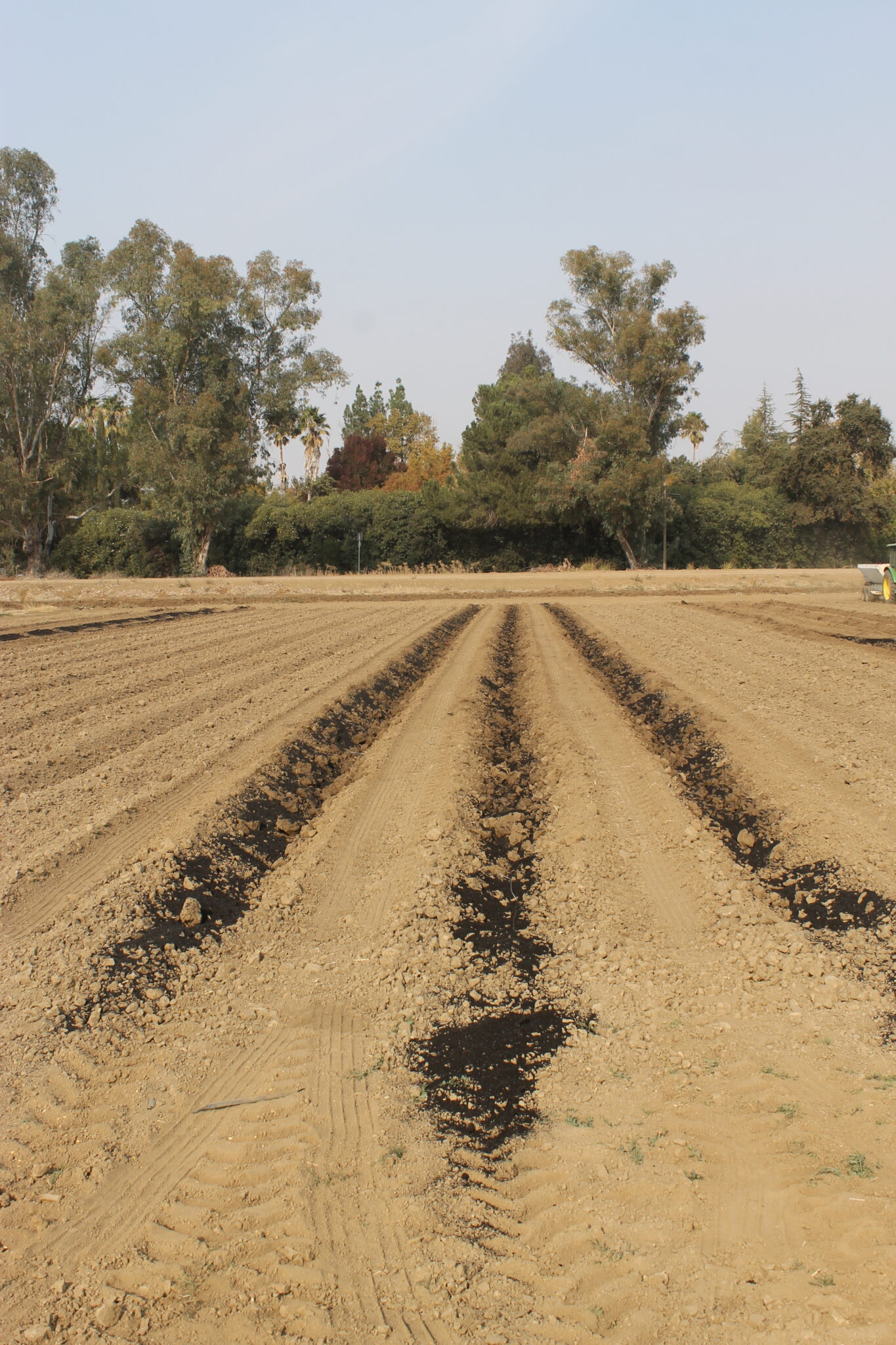
Google the word biochar and the first words you see are “environmental solution” and “benefits are amazing.”
There is no shortage of hype surrounding biochar as a soil amendment, but most articles about this pyrolysis product still use the word ‘potential’ in the description. Given the numerous variables in both biochar production and agronomic systems, research continues to determine the value of this product to field and orchard fertility and to the environment.
Gabriele Ludwig, Almond Board of California’s director for sustainability and environmental affairs, said the almond board has funded biochar research to learn its potential as an outlet for almond shells and wood waste.
Biochar is known to improve soil by providing space for microorganisms in the soil, improving aggregation, Ludwig said. The caveat in biochar use, she noted, is the need to look at the feedstock used to produce it as well as the temperature and humidity in production as different chemical and physical properties can result.
Biochar has become a general term for charcoal produced for use in soils. Biochar is the result of burning plant matter in an oxygen-limited oven. The process, called pyrolysis results in a product that is high in carbon and is resistant to decomposition. Biochar use in agriculture has been proposed as an effective way to increase carbon stocks and improve soil health. Researchers who are studying biochar as a soil amendment report that differences in the feedstock used to produce biochar, production methods, soil properties, climate and cropping systems have yielded inconsistent reports on the impacts of biochar on soil.
Feedstocks for biochar can include a soft woods from commercial almond production pruning and tree removal, almond and walnut shells, along with manure, turkey litter and other wood waste.
Interest in biochar as a soil amendment piqued in 2006 when soil scientists investigating Brazilian rainforest soils noted the health and growth of trees growing in ‘black earth’.
Sanjai Parikh, soil chemistry professor at UC Davis, has been focusing on understanding biochars, including the impact of feedstock and conditions of production on the utilities of different biochars. The research indicates some biochars, when added to the soil, provide better habitats, thus encouraging more microbial activity in the soils that leads to improved soil aggregation. He has also found tremendous variability in the characteristics of biochars, and has been heading up or participating in efforts to set up standards for criteria so growers can more easily assess which biochar will be useful for a particular purpose.

Air quality concerns over the production process with biochar remain. This complexity along with expected costs to growers has slowed adoption of biochar as a soil amendment.
California Department of Food and Agriculture Science Advisor Amrith Gunasekara said, in general, there is a lot of scientific literature on biochar as a promising soil amendment that sequesters carbon long term. Legislation was passed to standardize biochar and require at least 60% carbon as part of the statutes related to CDFA’s Fertilizer Materials and Inspection Program that regulates claims. If there are gaps in the data, Fertilizer Research and Education Program (FREP) tries to gather some of the data through funded research.
Gunasekara said that there are scientific data gaps that exist to add biochar as a practice in the Healthy Soils Program. One of the missing parameters, he said, is the lack of application rates for biochar for California’s different crops. Another is understanding if there are agronomic or environmental impacts from biochar in different crops.
Results from studies vary on ability of biochar to increase crop yields while addressing issues such as nitrate leaching, nutrient use efficiency and soil organic matter levels.
Two current studies funded by FREP are examining biochar’s impact in California agronomic systems. According to the project leaders, there is a need for reliable and localized research data to inform growers, stakeholders and policy makers of the benefits and trade-offs of biochar use on agricultural lands. UC Davis researcher Danielle Gelardi said the work is focused on providing long-term research data about the potential for biochar to boost crop yields and improve nutrient use efficiency as well as minimize nitrogen losses due to leaching. The researchers tested basic physical and chemical properties of seven types of biochar produced from different feedstocks and temperatures.
One project, led by Dr. Suduan Gao of USDA-ARS, has been focused on biochar characterization and the impact that biochar can potentially have on greenhouse gas emissions, nitrogen leaching, water availability and nitrogen availability. Gao’s team is also looking at interactions between biochar and compost when incorporated into the field together. The trials are using both laboratory and field studies. Gao conducted field trials in onion and tomatoes, and all of her trials were located in the south of Fresno. In this trial, biochar was broadcast and then incorporated into the soil. Field trials are complete and laboratory analysis is ongoing. The project is expected to be completed by the end of 2020
Another project took a more applied approach and focused on biochar interactions in the field and different ways to optimize the use of biochar amendments while monitoring potential impacts on the crop. Gelardi said the trials, in Davis and at the UC Kearney Research Center in Parlier, in production tomato fields have used biochar from almond shells pyrolyzed at 500 degrees C, at 800 degrees C and raw. They are also testing softwood biochar.
In the trial, the different biochar products were applied to the soil in a trench just above the drip line and then covered to place it as close to the plant roots as possible. In most other studies, Gelardi noted, the biochar is broadcast in the field. The project is also looking at differences in impacts of biochar on crops in different soil types. During the first two years of this three-year study, Gelardi said there were no significant differences in yields in tomatoes.
The UC Davis Biochar database shows growing interest in biochar use. Field and laboratory studies have included production analysis, soil properties, soil nutrients, plant response, soil biology and nutrient loss.
















